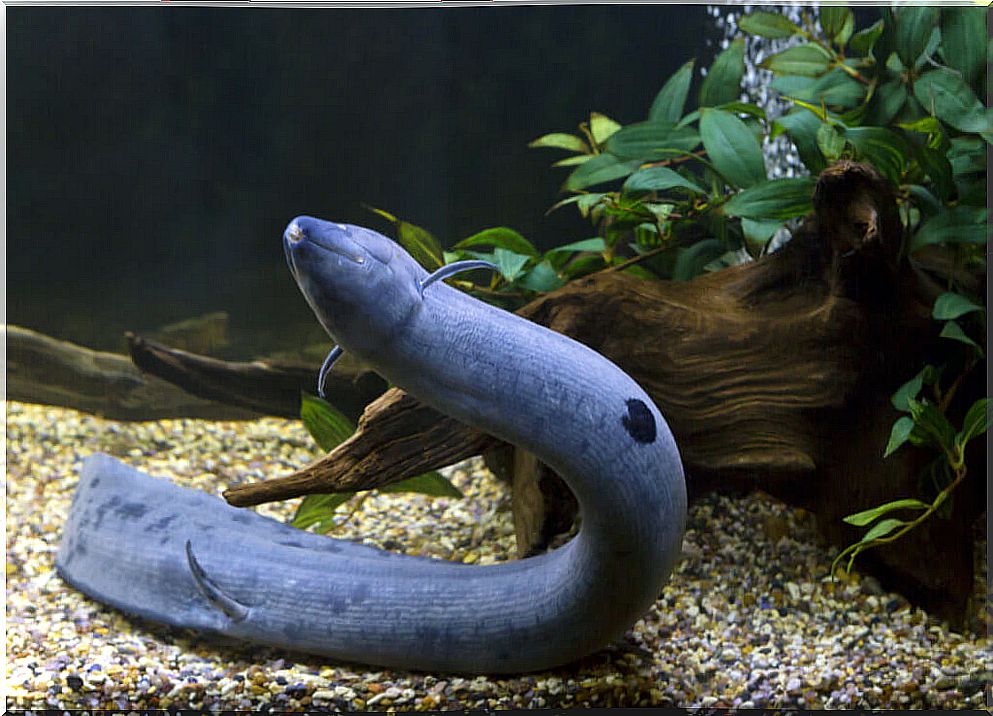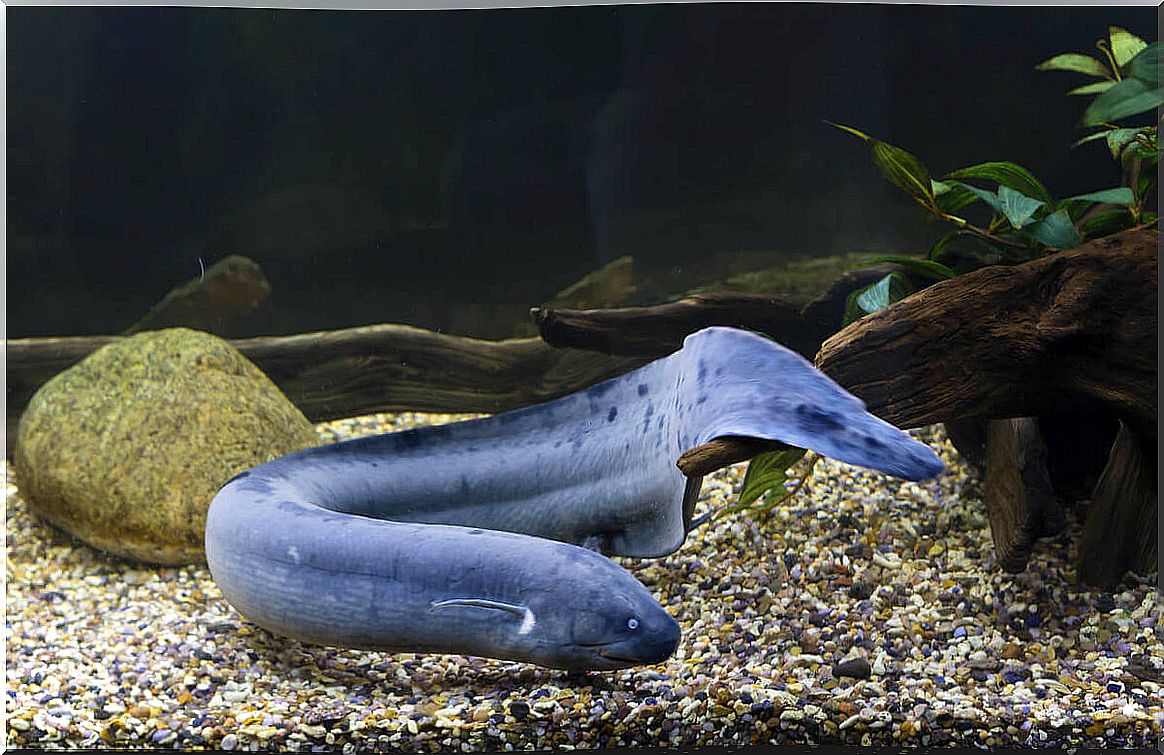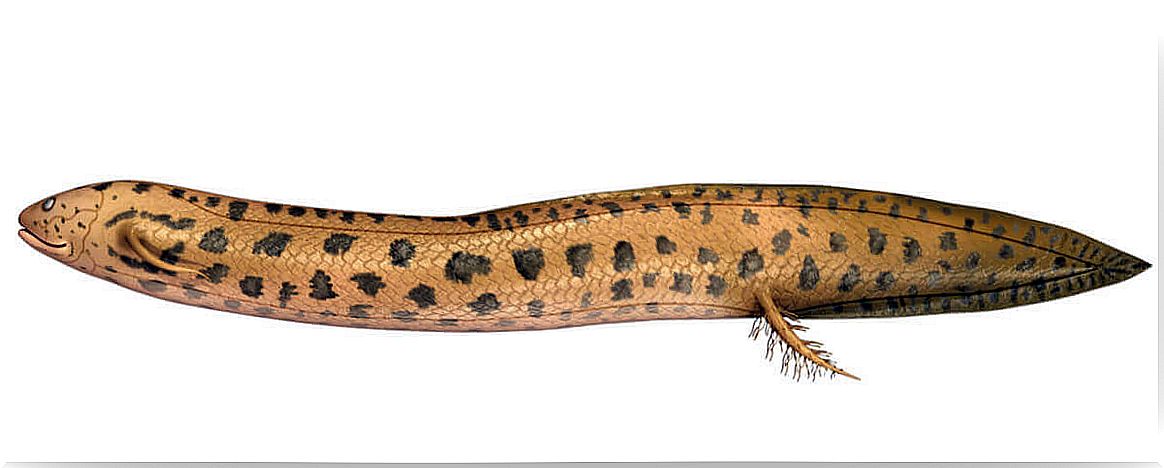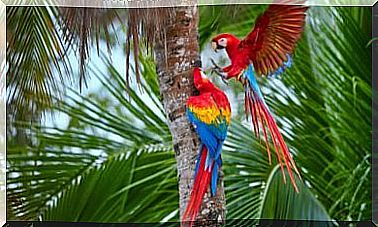Piramboia, A Fish With Lungs

Known by many names – pirarucu-boia, traíra-boia or caramuru – the pirarucu ( Lepidosiren paradoxa) is a fish with lungs. It is considered unique in its species and is the solitary member of the Lepidosirenidae family . This animal is quite unknown within the fauna of the South American subcontinent.
Why is this fish so unique? All our lives, we’ve heard that animals that breathe underwater breathe through their gills, so how can a fish with lungs exist? Keep reading to find out.
The dipnoic or lungfish: relatives of the Pyramid
The dipnoics are a subclass of fish very close to tetrapods, that is, animals that have four limbs. Among its most characteristic features is lung breathing. Furthermore, these beings also have nasal orifices open to the outside.
However, the function of these structures, in fact, is not to breathe air, as occurs in other terrestrial vertebrates, but to shelter the sense of smell. To capture air, these fish use their mouths and, like an amphibian, take air to their lungs when swallowing it.
Curiosities and characteristics about the pyramid
This elusive animal belongs, as might be expected, to the group of fish known as “dipnoicos”. Perhaps it is one of the most peculiar specimens that we can find in the South American fauna.
Its ability to breathe through its lungs gave this fish clear adaptive advantages. Most notable of all is the possibility of surviving, during the dry season, in watercourses that remain dry in the warmer seasons.
What does this fish do in those moments, when its habitat disappears for a few months? It digs tunnels in the mud and forms a series of underground breathing chambers, 30-40 centimeters from the surface.

Morphology of this fish with lungs
Young specimens of Pyramids are gilded with black relief. In adults, this color changes to brown or gray with darker spots. They are covered with very small scales that are immersed in the skin.
The adult specimens have an elongated and plump body – very similar to that of an eel – and can reach the size of up to 125 centimeters in length and 20 kilos in weight.
Its head is flat and its eyes are tiny. Its pectoral fins are thin and filiform. In contrast, the pelvic fins are longer and thicker and protrude backwards. Finally, it is necessary to emphasize that the odd fins – dorsal caudal and anal – are fused.
Anyway, all these fins are connected to the rest of the body by a single bone. This very particular feature differentiates the Pyramid from many other fish, but brings it closer to terrestrial vertebrates. Another of the many peculiarities of this fish is that the opening of the anus is located on the right side of the body.
behavior and customs
The habitat of this fish is usually stagnant waters where the current is scarce or nil, usually with abundant vegetation, rivers and swamps. The moment their territory dries up when the high temperatures arrive, the animals go into a kind of lethargy. In zoology this is known as aestivation.
For as long as it stays that way, the piramboia bends and reduces its metabolism. In addition, it also secretes a layer of mucus that seals moisture out of your air chamber, leaving only two or three small holes to allow ventilation of the space. This is how these fish survive until the channels fill with water again.
reproductive behavior
With the arrival of the rainy season, adults begin to come out of lethargy so that they can mate. Once the conquest is completed, the future parents build the nest where the chicks will stay, larvae that breathe through gills. In fact, these larvae are very reminiscent of amphibian tadpoles.
The male is responsible for watching over the eggs. Larvae are born with external gills that rapidly degenerate and transform into a reduced internal gill system.
Since the environment inside the nest is generally low on oxygen, the parent develops special structures in its pectoral fins with which it releases air. Thus, little by little, the puppies develop lung respiration, which begins to be effective from the seventh week of life onwards.
Feeding fish with lungs
In the juvenile stages, the piramboia feeds on molluscs and crustaceans that inhabit the bottom, together with insect larvae and small fish. As they grow, adults become omnivores, incorporating algae, herbaceous stalks and aquatic plants into their diet. All of this is crushed with its heavy mineralized teeth.
Was lung development an evolutionary adaptation for this animal?
Yes indeed. In general, dipnoics have adapted to live in habitats that, throughout the year or part of it, have low concentrations of oxygen. In this way, the pyramid can survive with these low levels of oxygen thanks to the development of its lungs. In fact, this is why your gill system is reduced, except in the larval stage.

The pulmonary apparatus of these fish is far from being as sophisticated as that of purely terrestrial animals. For example, it lacks bronchi, the tubes into which the trachea branches to carry air into the lungs. Even so, it helps these animals to survive throughout the year in environments that would otherwise be completely hostile to them.









